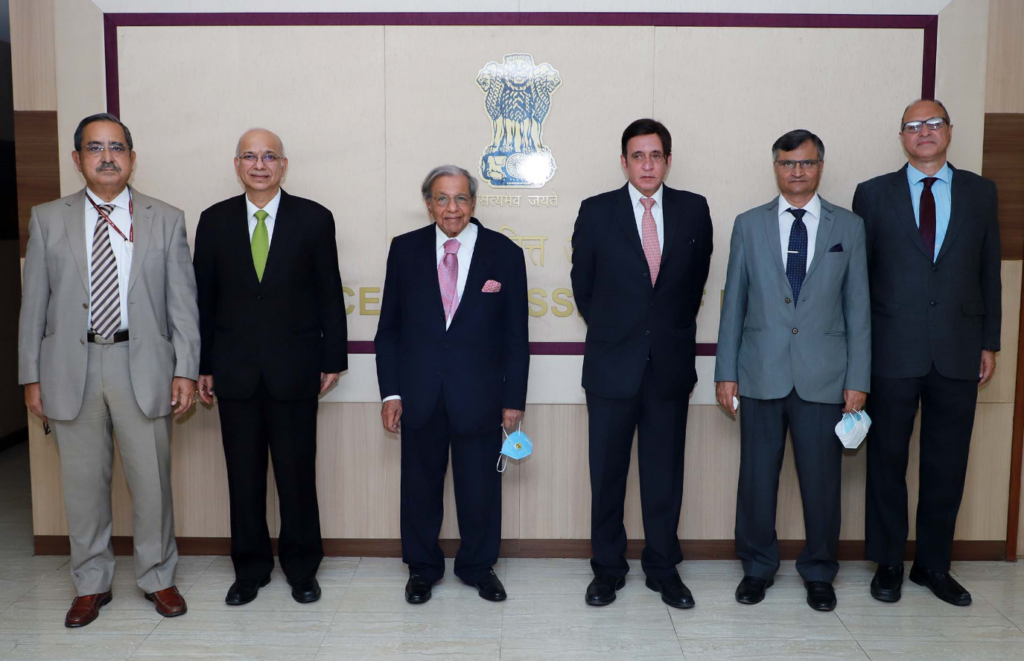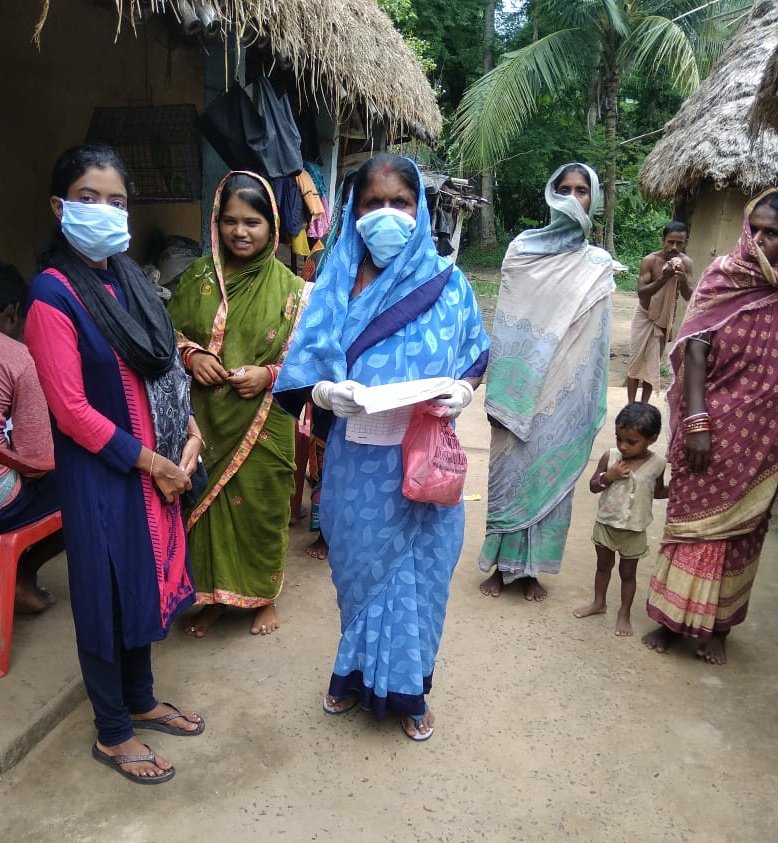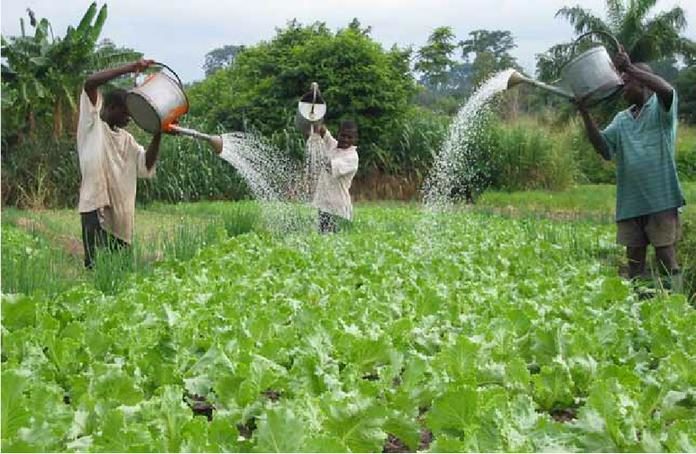Pradeep Kumar Panda
The Fifteenth Finance Commission (XVFC) has submitted its final report laying out the blueprint for devolution of Centre’s tax revenue to states for the period 2021-22 to 2025-26. As per the final report, suggested devolution is 41% retaining recommendation of Fourteenth Finance Commission. Dr. N K Singh is the Chairperson of the body while members of the commission are Ajay Narayan Jha, Prof Anoop Singh, Dr Ashok Lahiri and Dr Ramesh Chand and Arvind Mehta.

As per the terms of reference (ToR), the Commission was mandated to give its recommendations for five years from 2021-22 to 2025-26 by 30 October, 2020. The report titled ‘Finance Commission in Covid Times’ has recommendations on a various range of issues such as vertical and horizontal tax devolution, local government grants and disaster management grant. The Commission was also asked to examine and recommend performance incentives for states in many areas like power sector, adoption of direct benefit standard and solid waste management.
The Commission was also asked to examine whether a separate mechanism for funding of defence and internal security ought to be set up and if so how such a mechanism could be operationalised. The Commission has sought to address all its ToRs in this Report to the Union government.
The XVFC report has been organised in four volumes — Volume 1 and 2 contain the main report and the accompanying annexes. Volume 3 is devoted to the key departments of the central government in greater depth identifying the medium-term challenges and the roadmap for future. Volume 4 on states, their finances, and how to deal with the key challenges each of them faces. In total, main report has 117 core recommendations.
In order to maintain predictability and stability of resources, especially during the pandemic, XVFC has recommended maintaining the vertical devolution at 41% – the same as in interim report for 2020-21. It is at the same level of 42% of the divisible pool as recommended by FC-XIV. However, it has made the required adjustment of about 1 per cent due to the changed status of the erstwhile State of Jammu and Kashmir into the new Union Territories of Ladakh and Jammu and Kashmir.

In XVFC’s assessment, gross tax revenues for 5-year period is expected to be 135.2 lakh crore. Out of that, Divisible pool (after deducting cesses and surcharges & cost of collection) is estimated to be 103 lakh crore. States’ share at 41% of divisible pool comes to 42.2 lakh crore for 2021-26 period.
Including total grants of Rs. 10.33 lakh crore (details later) and tax devolution of Rs. 42.2 lakh crore, aggregate transfers to States is estimated to remain at around 50.9% of the divisible pool during 2021-26 period.
Total XVFC transfers (devolution + grants) constitutes about 34% of estimated Gross Revenue Receipts of the Union leaving adequate fiscal space for the Union to meet its resource requirements and spending obligations on national development priorities.
On horizontal devolution, while XVFC agreed that the Census 2011 population data better represents the present need of States, to be fair to, as well as reward, the States which have done better on the demographic front, XVFC has assigned a 12.5% weight to the demographic performance criterion. XVFC has re-introduced tax effort criterion to reward fiscal performance.
Based on uniform norms of assessing revenues and expenditure of the States and the Union, XVFC has recommended total revenue deficit grants (RDG) of Rs 2,94,514 crore over the award period for seventeen States.
The total size of the grant to local governments should be Rs. 4,36,361 crore for the period 2021-26. Of these total grants, Rs. 8,000 crore is performance-based grants for incubation of new cities and Rs. 450 crore is for shared municipal services. A sum of Rs. 2,36,805 crore is earmarked for rural local bodies, Rs.1,21,055 crore for urban local bodies and Rs. 70,051 crore for health grants through local governments.
Urban local bodies have been categorised into two groups, based on population, and different norms have been used for flow of grants to each, based on their specific needs and aspirations. Basic grants are proposed only for cities/towns having a population of less than a million. For Million-Plus cities, 100 per cent of the grants are performance-linked through the Million-Plus Cities Challenge Fund (MCF).

XVFC has recommend that health spending by States should be increased to more than 8 per cent of their budget by 2022. Given the inter-State disparity in the availability of medical doctors, it is essential to constitute an All India Medical and Health Service as is envisaged under Section 2A of the All-India Services Act, 1951.
The total grants-in-aid support to the health sector over the award period works out to Rs. 1,06,606 crore, which is 10.3 per cent of the total grants-in-aid recommended by XVFC. The grants for the health sector will be unconditional.
XVFC has recommend health grants aggregating to Rs. 70,051 crore for urban health and wellness centres (HWCs), building-less sub centre, PHCs, CHCs, block level public health units, support for diagnostic infrastructure for the primary healthcare activities and conversion of rural sub centres and PHCs to HWCs. These grants will be released to the local governments.

Out of the remaining grant of Rs. 31,755 crore for the health sector (total of Rs. 1,06,606 crore minus Rs. 70, 051 crore through local bodies and Rs.4800 crore state-specific grants), XVFC has recommended Rs. 15,265 crore for critical care hospitals. This includes Rs. 13,367 crore for general States and Rs 1,898 crore for NEH States.
XVFC has recommended Rs. 13,296 crore for training of the allied healthcare workforce. Out of this, Rs. 1,986 crore will be for NEH States and Rs. 11,310 crore for general States.
XVFC has recommended grants of Rs. 4,800 crore (Rs. 1,200 crore each year) from 2022-23 to 2025-26 for incentivising the States to enhance educational outcomes. XVFC has recommended Rs. 6,143 crore for online learning and development of professional courses (medical and engineering) in regional languages (matribhasha) for higher education in India.

XVFC has recommended that Rs. 45,000 crore be kept as performance-based incentive for all the States for carrying out agricultural reforms for amending their land-related laws on the lines of NITI Aayog’s model law incentive-based grants to States that maintain and augment groundwater stock.
Keeping in view the extant strategic requirements for national defence in the global context, XVFC has, in its approach, re-calibrated the relative shares of Union and States in gross revenue receipts. This will enable the Union to set aside resources for the special funding mechanism that XVFC has proposed.
The Union Government may constitute in the Public Account of India, a dedicated non-lapsable fund, Modernisation Fund for Defence and Internal Security (MFDIS). The total indicative size of the proposed MFDIS over the period 2021-26 is Rs. 2,38,354 crore.
Mitigation Funds should be set up at both the national and State levels, in line with the provisions of the Disaster Management Act. The Mitigation Fund should be used for those local level and community-based interventions which reduce risks and promote environment-friendly settlements and livelihood practices.
For SDRMF, XVFC has recommended the total corpus of Rs.1,60,153 crore for States for disaster management for the duration of 2021-26, of which the Union’s share is Rs. 1,22,601 crore and States’ share is Rs. 37,552 crore.

XVFC has recommended six earmarked allocations for a total amount of Rs. 11,950 crore for certain priority areas, namely, two under the NDRF (Expansion and Modernisation of Fire Services and Resettlement of Displaced People affected by Erosion) and four under the NDMF (Catalytic Assistance to Twelve Most Drought-prone States, Managing Seismic and Landslide Risks in Ten Hill States, Reducing the Risk of Urban Flooding in Seven Most Populous Cities and Mitigation Measures to Prevent Erosion).
A threshold amount of annual appropriation should be fixed below which the funding for a CSS may be stopped. Below the stipulated threshold, the administrating department should justify the need for the continuation of the scheme. As the life cycle of ongoing schemes has been made co-terminus with the cycle of Finance Commissions, the third-party evaluation of all CSSs should be completed within a stipulated timeframe. The flow of monitoring information should be regular and should include credible information on output and outcome indicators.
In view of the uncertainty that prevails at the stage that XVFC have done its analysis, as well as the contemporary realities and challenges, XVFC recognise that the FRBM Act needs a major restructuring and recommend that the time-table for defining and achieving debt sustainability may be examined by a High-powered Inter-governmental Group. This High-powered Group can craft the new FRBM framework and oversee its implementation. It is important that the Union and State Governments amend their FRBM Acts, based on the recommendations of the Group, so as to ensure that their legislations are consistent with the fiscal sustainability framework put in place. This High-powered Inter-Governmental Group could also be tasked to oversee the implementation of the 15th Finance Commission’s diverse recommendations.

State Governments may explore formation of independent public debt management cells which will chart their borrowing programme efficiently. The Finance Commission is a Constitutionally mandated body that is at the centre of fiscal federalism. Set up under Article 280 of the Constitution, its core responsibility is to evaluate the state of finances of the Union and State Governments, recommend the sharing of taxes between them, lay down the principles determining the distribution of these taxes among States.
Its working is characterised by extensive and intensive consultations with all levels of governments, thus strengthening the principle of cooperative federalism. Its recommendations are also geared towards improving the quality of public spending and promoting fiscal stability. The first Finance Commission was set up in 1951 and there have been fifteen so far. Each of them has faced its own unique set of challenges.
The XVFC was constituted on 27 November 2017 against the backdrop of the abolition of Planning Commission (as also of the distinction between Plan and non-Plan expenditure) and the introduction of the goods and services tax (GST), which has fundamentally redefined federal fiscal relations.

The Terms of Reference of the current Commission have some distinctive features, including recommending monitorable performance criteria for important national flagship programmes and examining the possibility of setting up a permanent non lapsable funding for India’s defence needs.
The reorganisation of the State of Jammu and Kashmir into two Union Territories – one of Jammu and Kashmir and one of Ladakh – presents a new dynamic. On the whole the Finance Commission faces new challenges in the process of the evolution of our federal polity. As an important Constitutional entity, the Commission is committed to balancing competing claims and priorities among all three tiers of government in a credible manner.
(The author is an economist based in New Delhi. Views are personal.)





















